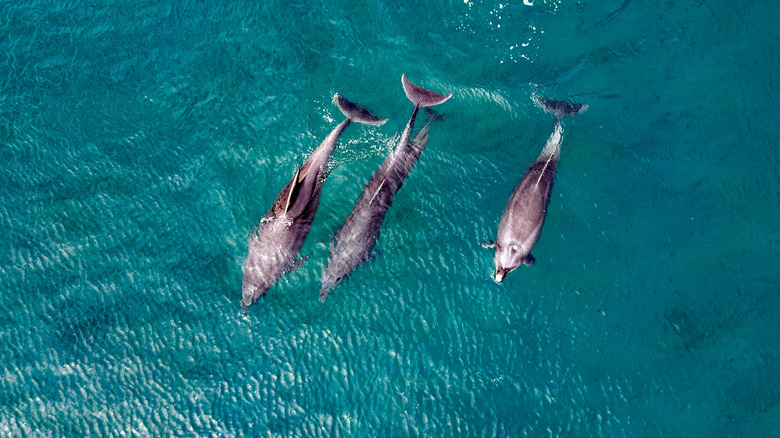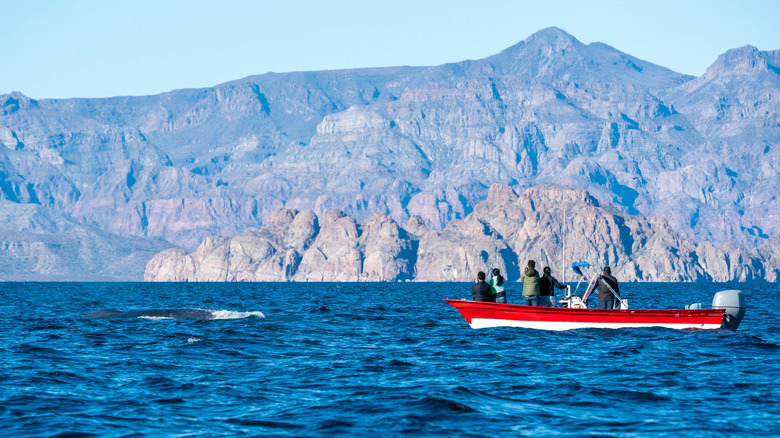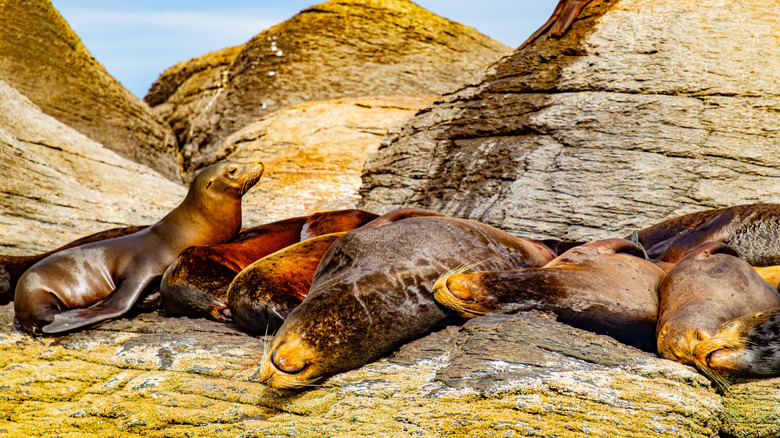This Underrated Eco-Tourist Destination In Baja California Sur Is Part Of 'The Aquarium Of The World'
Loreto is Baja California Sur's best-kept secret, and though the town has some of the most stunning swimmable beaches and is filled with quaint, boutique hotels, it is often overshadowed by its more famous cousins to the south, Los Cabos and La Paz. Located on the east coast of the Baja California peninsula, about five hours north of some of Mexico's most famous blue flag beaches in La Paz, Loreto is jam-packed with under-the-radar spots that, if "you know you know," are simply magical. And hidden in plain sight in this underrated Mexican destination is the stunningly biodiverse, natural haven of the Loreto Bay National Marine Park.
Located in the Gulf of California, nicknamed "the aquarium of the world" by famed oceanographer Jacques Cousteau, the park is home to over 800 species of fish, almost 40 kinds of birds, and 35 sea mammal species, some of which are only found within the park or in other eco-famous spots like the Galapagos Islands. It spans over 510,000 acres across five richly preserved and uninhabited islands as well as open water in the Gulf of California. Open to the public for mindful, eco-friendly visitation, this biodiverse jewel is where you can see dolphins, whales, and rare birds all in one day. It's not to be missed on a trip to Baja California Sur!
What you need to know about visiting the Loreto Bay National Marine Park
Loreto Bay National Marine Park encompasses five major islands – Isla Coronado, Isla Santa Catalina, Isla del Carmen, Isla Danzante, and Isla Monserrat – and is only accessible by boat. Don't be surprised by the size of the boat; you'll likely be in a small fishing vessel, locally called "pangas" or "lanchas," for your trip. There are a number of activities available in the park, both in and out of the water, including kayaking, whale watching (depending on the season), hiking, bird watching, and even camping. The easiest way to see the islands or to participate in any of these activities is to take a guided boat tour that originates in downtown Loreto.
If you are looking to camp, be aware that permitting is strict, and camping spots are assigned by the parks service upon application (this can be done at the boat ramp in downtown Loreto). Remember, this is a true ecological sanctuary, so when camping, be sure to minimize your impact. The easiest way to ensure you're doing it right is to go camping with an experienced company, like Sea Kayak Adventures in Loreto, which organizes permitting, brings all supplies and meals to the site for you, and helps facilitate activities on your behalf.
Regardless of which activity you choose, you'll appreciate how gorgeous the marine park is. With crystal blue waters in some areas of the bay, unique lava rock formations, and white sand beaches in many areas, the sites in the national park are simply otherworldly. For an entry fee that's the equivalent of $5 per person (plus the fee of a guided tour if you choose that route), you get to visit an incredibly biodiverse world, but on a budget.
Wildlife you can expect to see in Loreto
The wildlife and flora that inhabit the islands in the national park are nothing short of breathtaking, particularly for their rarity. Each island has its own sort of micro-environment, so from island to island, you'll see different varieties of flora and fauna. Isla Coronado, for example, is surrounded by brilliant displays of black coral reef, which houses a number of tropical fish species, making it a perfect spot for snorkeling. Meanwhile, Isla Santa Catalina is home to seven reptile species that are only found on this island, and nowhere else in the world.
Loreto Bay is probably most famous for its whale watching. From winter to early spring, migrating whales settle in Loreto Bay for the season, with blue whales being one of the most sighted species. But you may be able to see humpback whales, grey whales, fin whales, and even orca whales in the park. In addition to whales, reptiles, tropical fish, and coral reef, the park boasts sea lions, rare birds like the blue-footed booby, small mammals, and sea turtles as well. The biodiverse significance of Loreto Bay National Marine Park was such that in 2005, UNESCO named the park a World Heritage Site. The park is also a recognized Ramsar Site, a wetland that meets high standards of ecological conservation and sustainability. With such flourishing wildlife, it's no wonder Jacques Cousteau — explorer, inventor, and wildlife expert — would marvel at the Gulf of California and Loreto Bay National Marine Park's impressive displays of life.


